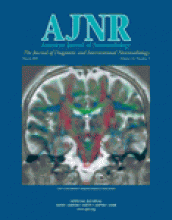David M. Yousem. St. Louis, MO: Mosby; 608 pages, 348 illustrations.
As most radiologists recognize, one of the most effective means of teaching both the basic principles and the nuances of imaging diagnostics is to present a reader with unknown cases. Having to decide what the abnormality is (if there is one), what it may represent, and the differential diagnoses of the finding(s) makes information stick. That is why case review series of publications, including this one on head and neck imaging, are valuable.
This particular compilation of cases and their accompanying head and neck images has been arbitrarily divided into unknowns, which Dr. Yousem segmented as easy (“opening round”), moderately difficult (“fair game”), and difficult (“challenge”). I found some of the opening round questions to be challenging. The easy ones could thus be considered difficult and the difficult ones could be considered more than challenging. That is one reason that this is a solid review of cases.
Much is to be learned and, one hopes, retained from this publication. An ample number of cases (200 cases) are presented, and they cover the breadth of head and neck imaging. Cross-referencing to a single literature citation (of relatively recent vintage) and to the appropriate book pages in Neuroradiology: The Requisites by Drs. Grossman and Yousem is provided for each case.
Regarding the cases themselves, the drawbacks are few and minor. For example, the four questions that are matched with images give away the diagnoses. Perhaps the author wanted the reader to deliberately look away from the questions, which are underneath the images, but such glances are frequently unavoidable. This should have been considered when comprising the design and layout of the cases and questions. Pleasing is that the cases are mixed. For example, the sinus cases or temporal bone cases are not lumped together, and the same can be said for other areas of the head and neck under consideration. In this way, the simulation of reading a stack of films is preserved. Each of the four questions presented with every case is accompanied by a brief answer on the next page. A short general commentary on the disease itself and the associated questions is also offered.
Although I appreciate that this is not intended to be a textbook in the classic sense, it would have been helpful in a number of cases for which the anatomy needed amplification to have included line drawings of the associated structures. Also, in the comments section, which describes the findings, it would have been helpful in a number of less obvious cases to have the key image repeated with appropriate labeling. I hope that Dr. Yousem will consider adding this feature to any future editions.
This publication covers the major abnormalities (both common and rare) that one would expect. However, some key areas would have been improved if more attention (or even some attention) had been paid to them. For instance, no cases of atherosclerotic disease of the vessels in the neck are presented, and hence, no CT angiograms, MR angiograms, or sonograms of primary carotid disease are shown. This is clearly an important area of head and neck imaging. Postoperative imaging of the neck, scarring versus tumor, and distorted anatomy would have been worth emphasis and would have been of more practical importance than some of the “zebras” discussed in the latter part of the book.
From an image quality point of view, the images are generally acceptable and show the main pathologic finding well. Drawbacks, however, were evident with some of the figures. In a couple of cases, the figures shown are too coned down; showing a wider field would have helped the reader to be more oriented. The quality of the few MR angiograms is not up to the quality one expects these days (but in the author’s defense, he probably retrieved these from older files).
Virtually all the material in this book is challenging. For the difficult cases, I did increasingly less well with the diagnoses and the answers to the questions. But, after all, that is how we learn. I was introduced (or maybe reintroduced) to at least 12 new terms (eg, Ohngren line, Kallman syndrome, Pindborg tumors, etc.). The challenge remains to retain such terms in the absence of having exposure to cases for which such terms are important.
Every resident or fellow rotating through neuroradiology should be required to read this book, quizzing themselves as they go along. A rotation’s worth of experience is contained in these cases, and with all the little pearls in the comments, the house officer will come out well prepared for the boards, for a certificate of added qualification examination, and importantly, for most cases seen in a clinical practice.
- Copyright © American Society of Neuroradiology












